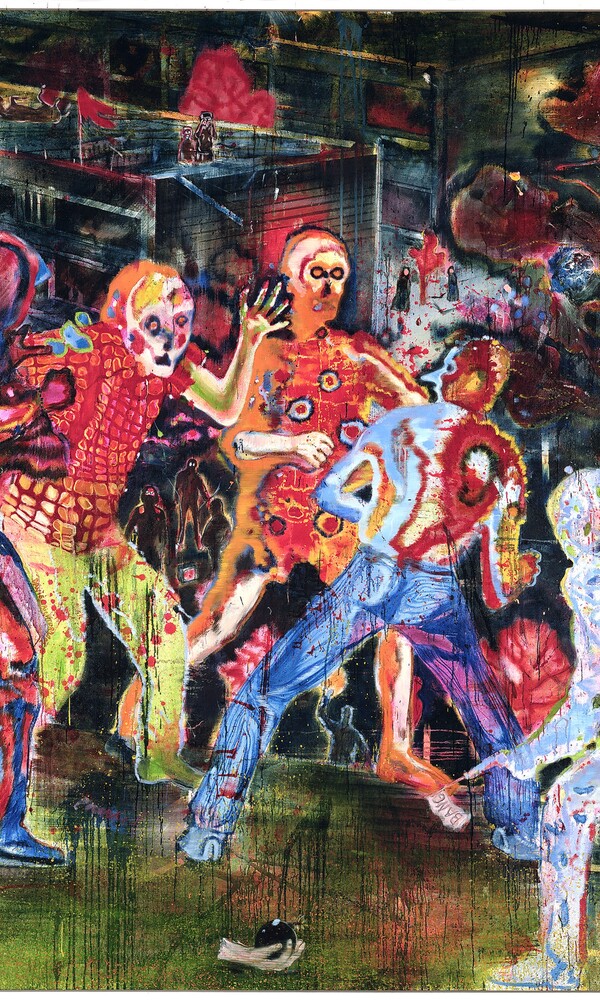Like few others, Daniel Richter (*1962) has set the tone of painting in Germany since the 1990s. In May 2007, the Kunsthalle in Hamburg will be the first museum to mount a large retrospective exhibition of his paintings. Richter combines clichés from art history, the mass media and popular culture in large-format oil paintings, thus creating unusual narrative pictorial worlds. The exhibition in Hamburg will provide an overview of his painting to date, and it is being mounted in close collaboration with the artist. More than 50 large paintings will be on show, and, for the first time, a selection from the series of more than 400 small formats, which serve Richter both as sketches of ideas and as a diary.
Richter studied at the Hamburg Hochschule für bildende Künste under Werner Büttner and was an assistant to Albert Oehlen. His first paintings were abstract, their strongly colourful psychedelic cosmos of forms oscillating between graffiti and ornament. Surrealism, underground and the intertwined grotesques of Italian mannerism were his points of orientation.
At the turn of the millennium, Richter turned from the abstract mesh to the human body, and since then his painting has been exclusively figurative. In large scenes with myriad figures, often inspired by reproductions in newspapers or history books, he portrays themes of strife and threat with an excessive vitality. Richter's return to figurative painting was widely celebrated as the rebirth of history painting – albeit a rebirth under a different sign. Whereas history painting relied on clearly legible pictorial narratives and aimed to legitimate the present by calling on the past, Richter's paintings deal with the failure of modernism's utopias. ‘I was interested in how to reference the world and the image of the world as I perceive it or wish to describe it’, is how the artist himself explained the change.
Some of the themes of the paintings he then produced were, for example, the failed communist uprising in Hamburg Barmbek in 1923 (Nerdon) or the overloaded rubber dinghys transporting refugees from North Africa (Fatifa). Frequently the motifs and readings of Richter's paintings are characterised by a significant ambivalence. His first figurative work, Phienox, for example, presents a dramatically-charged scene in which people are helping to heave a man over a high wall. It was painted in the year 2000, just as the tenth anniversary of German reunification was being commemorated. The painting, however, was inspired by a newspaper photograph documenting the events surrounding the terrorist attack on the American embassy in Nairobi. Most of Richter's paintings are picture puzzles of this kind, which the viewer has to complete with the help of his own knowledge and ideas of politics and popular culture.
A catalogue of the exhibition with essays by Dietmar Dath, Christoph Heinrich and Kitty Scott, published by Dumont (248 p.)
With generous support by Ernst & Young
